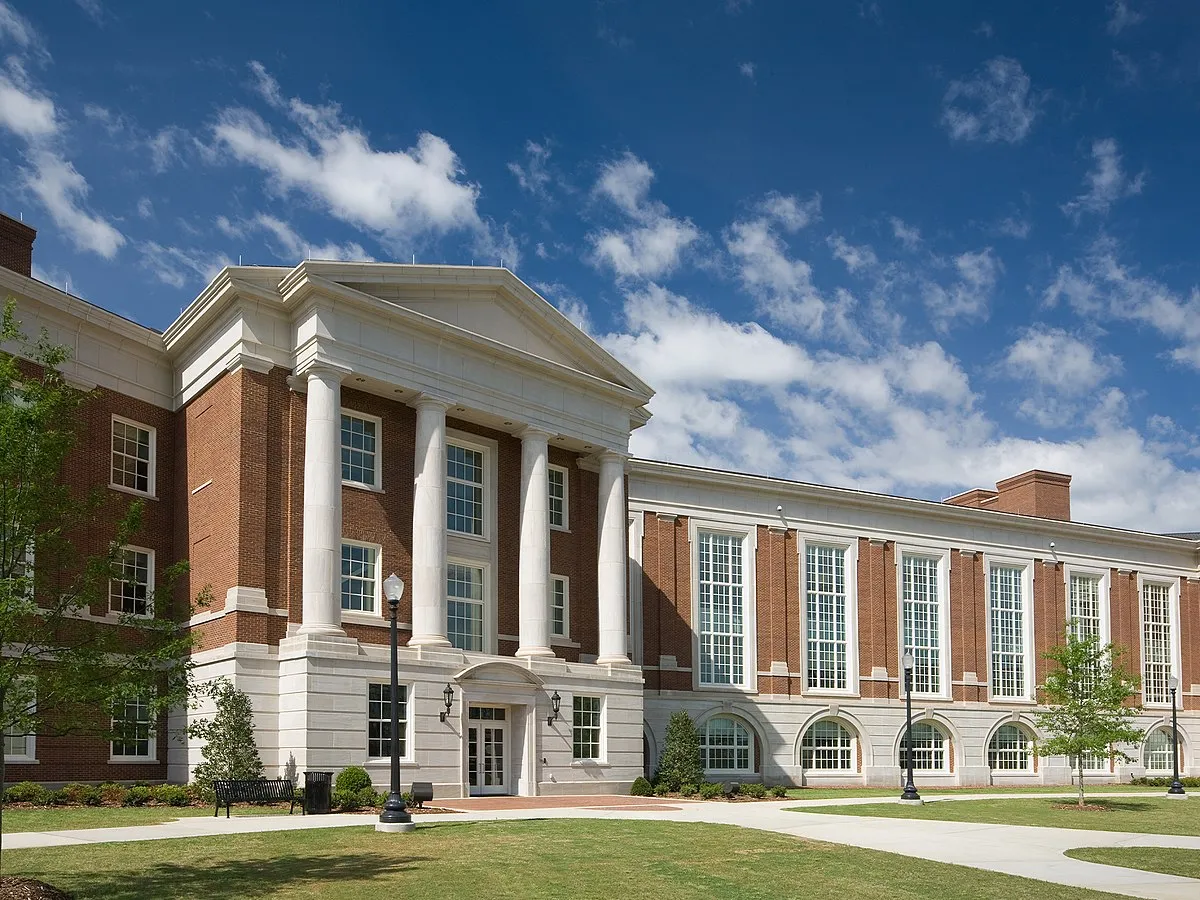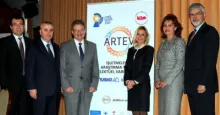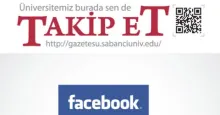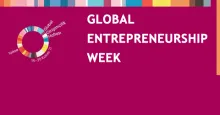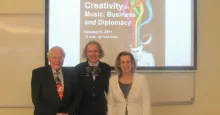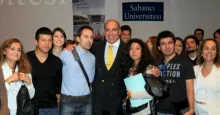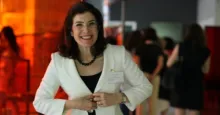The “Research-Based Intellectual Assets (ARTEV) Management Platform,” a joint initiative led by Sabancı University in association with Boğaziçi, Koç, Istanbul Technical and Özyeğin Universities and LES Turkey*, was inaugurated to “contribute to information-based development via intellectual asset management.” The multifaceted initiative brings 5 Istanbul universities and LES Turkey together under a consortium and has an exemplary cooperative structure.
The institutions responded to the Istanbul Development Agency’s call for 2010 projects as a consortium, and received a funding of TL 700,000 with the ARTEV Management Platform initiative for information-based economic development, and will work towards creating awareness, developing institutional competence and know-how, and establishing the foundations of a curriculum for professional certification programs.
The first ARTEV Management Platform seminar on “Research-Based Intellectual Asset Management in Organizations” was held in association with TÜSİAD.
The ARTEV Management Platform is planning a series of seminars on research-based intellectual asset management in various fields. The first in the series, Research-Based Intellectual Asset Management in Organizations, was held at Boğaziçi University.
The seminar was held in association with the Businessmen and Industrialists’ Association of Turkey (TÜSİAD). Speaking at the opening were Sabancı University President Professor Nihat Berker, TÜSİAD Chairperson Ümit Boyner and Turkish Patents Institute Director Professor Habip Asan.

Following a welcome speech by Professor Gülay Barbarosoğlu, Vice-President of Boğaziçi University, Sabancı University President Professor Nihat Berker came to the podium, saying that Sabancı University took a great number of first steps since intellectual property began to be discussed in the 2000s with a resulting organizational revision, and that their aim was to expand this initiative under the guidance of Sabancı University with the support of Boğaziçi University, Koç University, Istanbul Technical University, Özyeğin University and LES Turkey. Berker said that the ARTEV Management Platform was an initiative supported by the Istanbul Development Agency within the scope of information-based economic development programs, explaining that the crucial aspect of this program was to bring a visionary approach to the management of intellectual assets, considered the intangible assets of institutions, as well as set an example to the cooperative environment needed for Turkey’s transition to an information-based economy. Nihat Berker continued, “Another important aspect of this cooperative effort is the partnerships we are establishing with NGOs and public authorities. In this respect, it is very valuable for us to be holding the opening event of intellectual asset management in organizations with TÜSİAD. I would like to thank TÜSİAD Chair Ümit Boyner, and the Association as a whole, for supporting and cooperating with us.”
Nihat Berker emphasized the need to define “Intellectual Asset,” and continued, “As an institution that has kept abreast of global developments and pioneered the introduction of innovative concepts to its stakeholders since its establishment, Sabancı University defined intellectual asset instead of intellectual property when creating this platform. The main reason here is the perception that intellectual property is purely a legal discipline. However, understanding that the management of the values within the scope of this concept is a management discipline geared towards strategic management in the medium and the long term is very important. Management is a multidisciplinary field that includes strategic subjects like technology, law, finance and marketing. In its widest meaning, intellectual asset is a portfolio that includes all knowledge under the categories of organizational capital, human resources and relational capital, whether subject to registration (patents, trademarks, designs, copyrights, etc.) or not subject to registration (trade secrets, databases, customer portfolios, contracts, etc.). In manufacturing economies, tangible assets account for almost all of the organizational value, while in knowledge economies, intangible, or intellectual, assets account for 70% of the average organizational value. This fact leads us to the conclusion that these values must be managed strategically.

“Today, we are beyond discussing the importance of protecting intellectual property rights. We are discussing how the new information ecosystem that is emerging in organizations due to economic growth should be managed, and how these organizations may achieve higher places with a global competitive edge. When these assets are defined by the right strategies, protected when needed, valuated, opened to trade, made visible and measurable with respect to shareholders, and the supporting legislation is established in a sound way, macroeconomic indicators will be more reliable, start-up investments with high risk factors will increase, export of value-added products will expand, and more foreign investment will be attracted. To quote only one example, a 10% increase in the patent rights index of a country brings a 16% increase in the country’s international investment inventory. An improvement of this proportion in Turkey may bring an additional international investment of 28 billion dollars. This translates to a 1.5% increase in the GNP, 6.5% increase in exports, and the employment of 28,000 more people.”
TÜSİAD Chair Ümit Boyner said, “I would like to congratulate Sabancı, Koç, Özyeğin, Boğaziçi and Istanbul Technical Universities and LES Turkey for initiating this important project, and thank the Istanbul Development Agency for providing the funding that will enable companies to utilize their intellectual assets, perhaps the most valuable asset in the 21st century, in Turkey.” Ümit Boyner explained that TÜSİAD was ready to cooperate with ARTEV to contribute directly to the success of the platform. Boyner said that knowing how intellectual property rights could be utilized and taking part in the management of these rights were very important for business leaders in Turkey to increase their competitive capabilities and reinforce their successful results in the 21st century, and gave the example of Steve Jobs, who managed the intellectual rights of his company personally.
Ümit Boyner said that significant ground had been covered in the field of intellectual rights in Turkey in the last 15 years, continuing, “Domestic and foreign trademark and patent applications increase at a fast pace. Public funding for R&D and innovation efforts is also on the rise. However, imply increasing the incentive for R&D investments is not enough; an awareness of intellectual rights must also be cultivated. For example, an R&D investment of one million dollars produces 0.4 patent applications in Turkey. This number is 2.4 in Japan and 3.3 in Korea.” Ümit Boyner added, “As TÜSİAD, our priority is to ensure that our companies are fully integrated to the changing global system, and are competitive. To this purpose, we are preparing a report on the integration of intellectual rights to company strategies, management of intellectual rights, and the active utilization of these rights in trade as part of the YOİKK Technical Committee on Intellectual and Industrial Property Rights Action Plan. With this report, we review the current incentive systems in Turkey and recommend new systems to improve the investment environment, strengthen the Turkish economy and increase Turkey’s competitiveness. Our recommendations include the recruitment of industrial property rights managers, incentives for the establishment of an industrial property rights infrastructure, and tax exemption for revenues generated by commercializing industrial property rights. We believe that the adoption of these recommendations will be greatly beneficial to the utilization and commercialization of intellectual rights.”
(*) Licensing Executives Society Turkey


